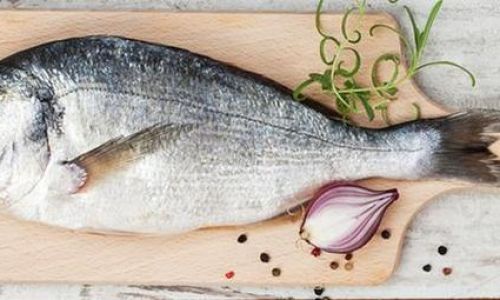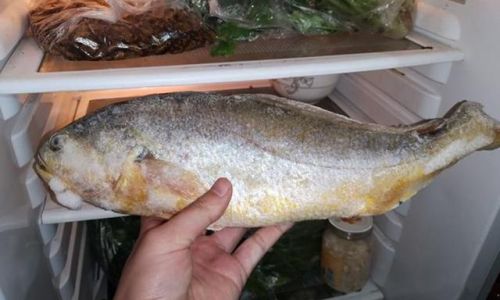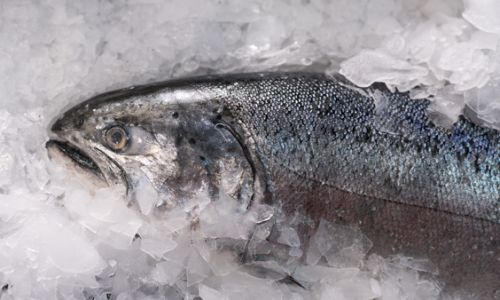Table of content
- A. Refrigerator Thawing (Safest)
- B. Cold Water Thawing (Faster)
- C. Microwave Thawing (Quickest)
- D. Cooking From Frozen (Convenience)
- A. Bacterial Growth
- B. Histamine Formation
- C. Cross-Contamination
- A. Baking
- B. Pan-Frying
- C. Grilling
- D. Poaching
- Myth 1: “Thawing at Room Temperature Is Fine”
- Myth 2: “Cooking From Frozen Ruins Texture”
- Myth 3: “Freezing Kills All Bacteria”
Introduction
Frozen fish has become a staple in modern kitchens, offering convenience, affordability, and access to a variety of species year-round. However, a common question lingers: Can you eat frozen fish directly after thawing it? This article delves into the science, safety, and practicalities of consuming thawed frozen fish, exploring everything from bacterial risks to culinary best practices. Whether you’re a home cook stocking up on seafood or a food safety enthusiast, understanding the nuances of frozen fish handling is essential to avoid illness and preserve quality.
The Freezing Process: Preserving Fish for the Long Haul
Freezing is a time-tested method to extend the shelf life of fish by halting microbial growth and enzymatic activity. When fish is frozen, water within its cells forms ice crystals, which effectively paralyze bacteria and spoilage organisms. However, the quality of frozen fish depends on factors like:
- Speed of freezing: Rapid freezing (e.g., blast freezing) minimizes ice crystal size, reducing cell damage and moisture loss during thawing.
- Packaging: Vacuum-sealed or airtight packaging prevents freezer burn and oxidation.
- Fish species: Fatty fish like salmon and mackerel may oxidize faster than lean varieties like cod or tilapia.
Despite these precautions, freezing does not kill bacteria—it merely renders them dormant. Once thawed, microorganisms can reactivate, making safe thawing practices critical.
Thawing Methods: Safety vs. Convenience
How you thaw frozen fish determines its safety and texture. Here’s a breakdown of common methods:

A. Refrigerator Thawing (Safest)
- Process: Transfer frozen fish to the fridge 24 hours before cooking.
- Pros: Maintains a safe temperature (below 40°F/4°C), minimizing bacterial growth.
- Cons: Time-consuming; requires planning.
B. Cold Water Thawing (Faster)
- Process: Submerge sealed fish in cold water, changing the water every 30 minutes.
- Pros: Thaws faster than the fridge (1–2 hours for small fillets).
- Cons: Risk of partial thawing if not monitored; must be cooked immediately.
C. Microwave Thawing (Quickest)
- Process: Use the “defrost” setting, checking frequently.
- Pros: Rapid thawing.
- Cons: Uneven heating can cook edges; may compromise texture.
D. Cooking From Frozen (Convenience)
- Process: Add frozen fish directly to hot oil, soup, or a preheated oven.
- Pros: Saves time; reduces bacterial risk (no thawing phase).
- Cons: Longer cooking time; uneven texture in some dishes.
Key Takeaway: Refrigerator thawing is the safest, but cooking from frozen is acceptable if you adjust cooking times.
Safety Risks of Improper Thawing
Thawing fish at room temperature or in warm water creates a “danger zone” (40°F–140°F/4°C–60°C), where bacteria multiply rapidly. Risks include:
A. Bacterial Growth
- Salmonella, Listeria, and Vibrio species can cause foodborne illness.
- Symptoms: Nausea, diarrhea, fever, or severe complications in vulnerable groups.
B. Histamine Formation
- In species like tuna, mackerel, and mahi-mahi, improper thawing can trigger histamine production, leading to scombroid poisoning (rashes, headaches, palpitations).
C. Cross-Contamination
- Juices from thawing fish can drip onto other foods, spreading bacteria.
Mitigation: Thaw fish on a tray in the fridge, away from ready-to-eat items.
Texture and Quality: Does Thawing Affect Taste?
Freezing and thawing can alter fish texture due to ice crystal formation. Here’s how:

- Moisture Loss: Thawed fish may release liquid, causing sogginess.
- Mushiness: Overly slow thawing or refreezing can break down cell structures.
- Flavor Changes: Oxidation may reduce freshness in fatty fish.
Tips to Preserve Quality:
- Pat thawed fish dry before cooking.
- Use thawed fish within 1–2 days.
- Avoid refreezing raw thawed fish (cook first).
Cooking Thawed Frozen Fish: Techniques and Tips
Proper cooking ensures safety and enhances flavor. Here’s how to prepare thawed fish:
A. Baking
- Preheat oven to 375°F (190°C).
- Brush with oil, season, and bake 15–20 minutes (internal temp 145°F/63°C).
B. Pan-Frying
- Heat oil in a nonstick skillet.
- Cook 3–4 minutes per side over medium heat.
C. Grilling
- Oil grates to prevent sticking.
- Grill 4–5 minutes per side (lean fish may need foil packets).
D. Poaching
- Simmer in flavorful liquid (broth, wine, or coconut milk) until opaque.
Flavor Boosters:
- Marinades (citrus, soy, herbs) mask “frozen” taste.
- Lemon slices, fresh dill, or garlic butter elevate simplicity.
When to Avoid Direct Consumption: Raw Preparations
Eating thawed frozen fish raw (e.g., sushi, ceviche) is risky unless:

- The fish was previously frozen to -4°F (-20°C) for 7 days (kills parasites like Anisakis).
- It’s labeled “sushi-grade” or “sashimi-grade” (regulations vary by region).
Caution: Home freezers rarely reach -4°F, so assume store-bought frozen fish isn’t parasite-free.
Storage After Thawing: How Long Is Too Long?
Thawed fish should be treated like fresh:
- Refrigerator: 1–2 days maximum.
- Discard if:
- Odor is sour or ammonia-like.
- Flesh is dull, gray, or slimy.
- Eyes are cloudy (for whole fish).
Refreezing: Only refreeze cooked fish. Raw thawed fish should not be refrozen.
Expert Recommendations: What the FDA Says
The U.S. Food and Drug Administration (FDA) advises:

- Thaw fish in the fridge, cold water, or microwave.
- Cook immediately after thawing in cold water or microwave.
- Use a food thermometer to ensure fish reaches 145°F (63°C).
Common Myths Debunked
Myth 1: “Thawing at Room Temperature Is Fine”
- Reality: Room temperature thawing invites bacterial growth.
Myth 2: “Cooking From Frozen Ruins Texture”
- Reality: While texture may differ, it’s safe and convenient for stews or stir-fries.
Myth 3: “Freezing Kills All Bacteria”
- Reality: Freezing pauses bacteria, but doesn’t destroy them.
Conclusion: Balancing Convenience and Safety
Frozen fish is a pantry hero, but its safety hinges on proper thawing and cooking. By avoiding the danger zone, cooking to the right temperature, and heeding freshness cues, you can enjoy thawed frozen fish without risk. Whether you’re whipping up a weeknight curry or a weekend seafood feast, a little knowledge goes a long way in ensuring your meal is both delicious and safe.
Final Tip: When in doubt, remember the golden rule: When thawing fish, keep it cold; when cooking it, make it hot. Your taste buds—and your gut—will thank you.





0 comments